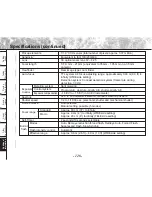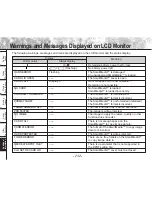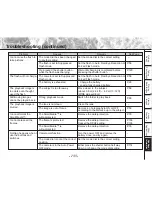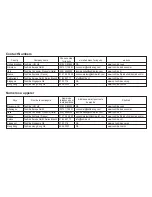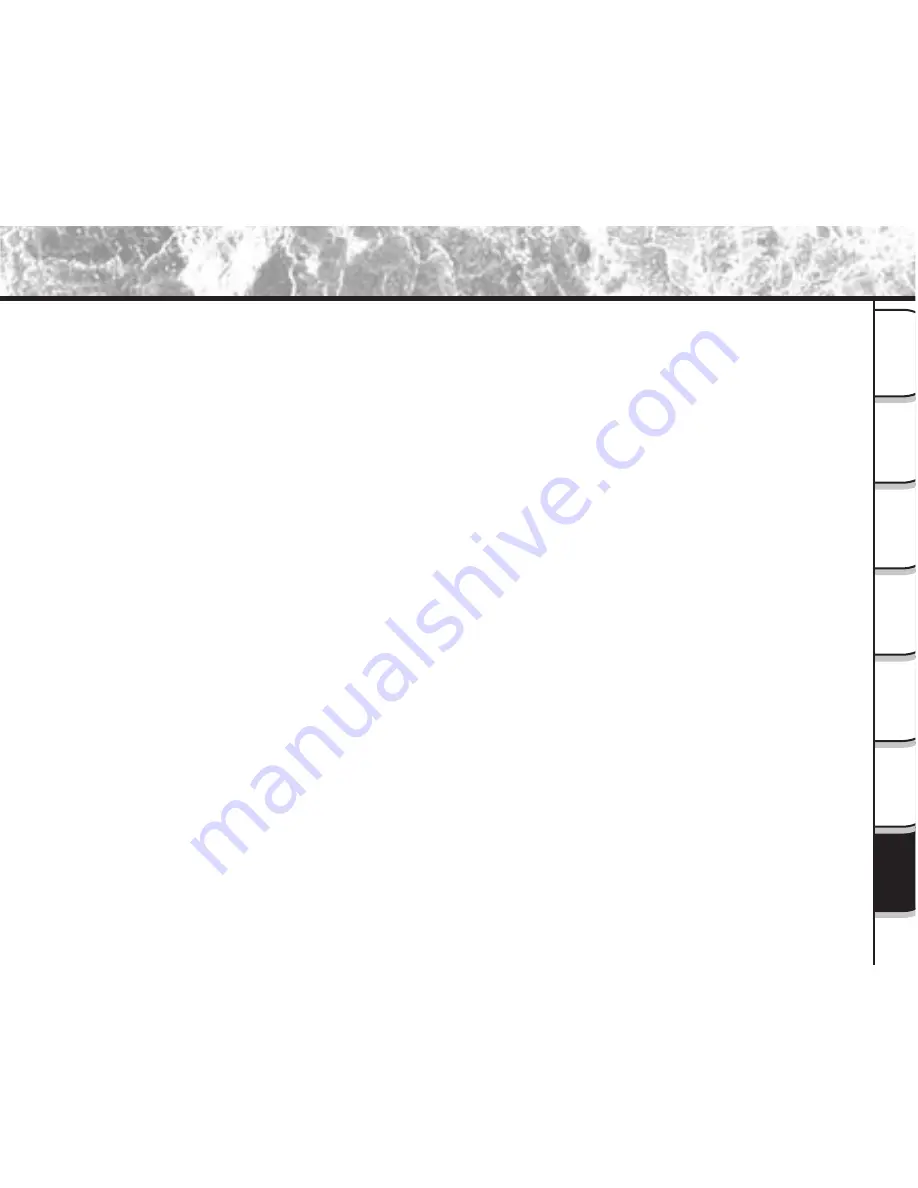
- 137 -
Getting
Read
y
T
aking
Photographs
Pla
ying
Bac
k Ima
g
e
s
Other
Applications
Ad
ditional
Inf
ormation
Erasing
Ima
g
e
s
Hand
y
Functions
Glossary
●
AF/AE
AF (auto-focus) ··· A function for automatically
focusing your camera.
AE ··· A function for automatically setting your
camera’s exposure.
AF/AE lock ··· Locking of the focus and exposure
settings.
●
DPOF (Digital Print Order Format)
A standard for directly writing print information to the
SmartMedia™. Files in this format can be printed
easily by printers or photo print service bureaus that
support this format.
●
DCF (Design rule for Camera File System)
A file system standard defined by the JEIDA (Japan
Electronic Industry Development Association) that is
required for exchanging data between digital still
cameras or a digital camera and a printer. This
standard defines the hierarchy and file names used
when storing image files on memory cards or other
recording medium.
●
Exif File Format (Exchangeable Image File Format)
A color still image format for digital still cameras
approved by the JEIDA (Japan Electronic Industry
Development Association). JPEG-compliant, this
format is compatible with TIFF and JPEG and can be
used in image processing software for most personal
computers.
●
JPEG
A file format used for compressing and saving color
images. The compression ratio can be selected, but
the higher the compression ratio, the worse image
quality becomes. This format is widely used in the
paint software for PCs and on the Internet.
●
NTSC (National Television System Committee)
Method of television transmission in use in Japan and
North America
●
PAL (Phase Alternate Line)
Method of television transmission in use in the United
Kingdom, Germany and other western European
countries
●
PC Card
A generic term for cards that meet the PC Card
Standard.
●
Red-Eye Effect
The phenomenon where people’s eyes sometimes
appear red in the picture when you use a flash to
photograph them in low-light conditions. This is
caused by the light of the flash reflecting off the
inside of the eye.
●
White Balance
When the brightness of the light changes, the human
eye adapts so that a white object still looks white. On
the other hand, devices such as digital still cameras
see a white subject as white by first adjusting the
balance to suit the color of the ambient light around
the subject. This adjustment process is referred to as
matching the white balance.






